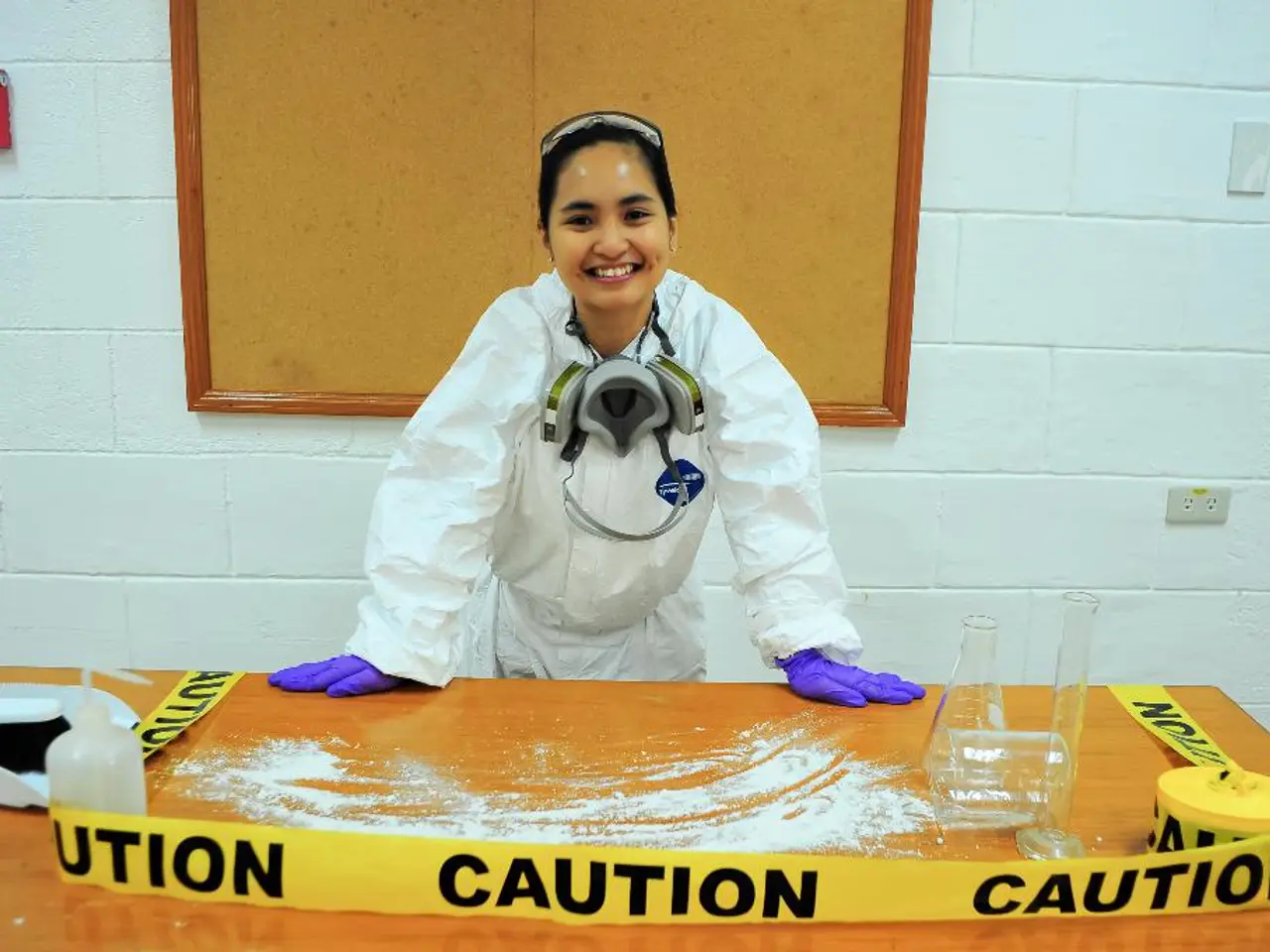Identifying Symptoms of Toxic Shock Syndrome: A Guide
Skin conditions can be a source of discomfort and concern, and it's essential to understand the differences between them to seek appropriate treatment. Here, we will discuss Toxic Shock Syndrome (TSS), a serious condition, and other common rashes such as sunburn, contact dermatitis, heat rash, rosacea, and cellulitis.
Toxic Shock Syndrome (TSS)
TSS is a potentially life-threatening condition caused by the Staphylococcus aureus bacterium. Symptoms develop rapidly and require immediate medical attention. Common symptoms include sudden high fever, low blood pressure, nausea, vomiting, diarrhea, muscle pain, dizziness, faintness, confusion or altered mental state, rapid or difficult breathing, and a distinctive skin rash that often feels rough, similar to a sunburn or sandpaper texture. The rash can also involve redness of the tongue, palms, soles of the feet, and the whites of the eyes.
Risk factors for TSS include skin wounds, burns, or open sores, soft tissue infections, postsurgical infections, recent childbirth, pregnancy loss, or abortion, and using diaphragms or contraceptive sponges. Early diagnosis and urgent treatment including hospitalization, hydration, and antibiotics are critical to prevent high mortality rates associated with TSS.
Differentiating TSS from Other Rash Conditions
Differentiating TSS from other rash conditions, such as scarlet fever or other skin infections, is based on the combination of rapid onset, systemic symptoms, and characteristic rash features.
| Feature | Toxic Shock Syndrome (TSS) | Scarlet Fever | Other Skin Infections | |-----------------------------|---------------------------------------------|---------------------------------------------|-----------------------------------------------------------------| | Rash texture and appearance | Rough, sunburn-like or sandpaper feeling; often widespread redness including face and body; red tongue, palms, and soles of the feet | Sandpaper-textured rash with small raised spots, often beginning in groin/armpit; "strawberry tongue" common; Pastia’s lines (red lines in skin folds) | Localized erythema, swelling, warmth, tenderness; may be red and inflamed but less systemic involvement | | Onset | Sudden and rapid; symptoms develop quickly over 24-48 hours | Develops usually 2-3 days after streptococcal infection | Variable; often slower onset localized to injured area | | Systemic symptoms | High fever, low blood pressure, confusion, muscle aches, vomiting, diarrhea, shock-like hypotension | Fever, sore throat, rash, flushed cheeks | Local signs of inflammation with or without systemic fever depending on severity | | Cause | Staphylococcus aureus and Streptococcus pyogenes producing toxins | Streptococcus pyogenes infection | Various bacteria depending on infection site |
The key diagnostic feature of TSS is the systemic toxicity with rapid progression, hypotension, and multi-organ involvement along with the characteristic rash and typical bacterial toxin production.
Other Common Rashes
Sunburn
A sunburn is an inflammatory skin reaction that results from overexposure to UV rays from the sun, causing painful or swollen skin, which can become very red in people with lighter skin, and may result in peeling and flaking. Aloe vera can be applied to soothe and moisturize affected skin, while blisters should be kept clean and dry while healing. Over-the-counter pain relievers like ibuprofen or aspirin can reduce swelling and relieve pain. Taking cool baths or showers can also help relieve pain.
Contact Dermatitis
Contact dermatitis is an allergic skin reaction that develops when the skin comes into contact with an irritant. Avoiding known allergens and irritants can help treat and manage symptoms. Over-the-counter anti-itch ointments and allergy medication such as diphenhydramine (Benadryl) or cetirizine (Zyrtec) can help manage symptoms. Fragrance-free moisturizers can help keep the skin hydrated during contact dermatitis. Cool compresses can also help relieve symptoms.
Heat Rash
Heat rash, or miliaria, is a skin rash that occurs when sweat becomes trapped inside blocked sweat glands. Avoiding hot environments and keeping the skin cool can help reduce mild heat rash symptoms. Over-the-counter allergy medication and calamine lotion can help manage more severe forms of heat rash.
Rosacea
Rosacea is a chronic skin condition that causes patches of discolored skin and small, fluid-filled bumps. There is currently no cure for rosacea. Avoiding triggers such as sun exposure, heat, wind, exercise, alcohol, stress, certain medicines, cosmetics, and hair care products can help reduce symptoms.
Cellulitis
Cellulitis is another type of skin infection that is caused by Staphylococcus and Streptococcus bacteria. People with cellulitis may notice flushed, swollen skin that is warm or painful to the touch. Doctors can treat cellulitis with antibiotics.
It's essential to understand the differences between these common skin conditions to seek appropriate treatment and manage symptoms effectively. If you experience any concerning symptoms, consult a healthcare professional immediately.
- The distinctive rash, resembling a sunburn or sandpaper texture, seen in Toxic Shock Syndrome (TSS) is a crucial diagnostic feature.
- Notably, TSS, unlike other rash conditions like scarlet fever or skin infections, manifests with sudden onset, systemic symptoms, and a characteristic rash.
- In the realm of common skin conditions, sunburn, for those with lighter skin, involves painful or swollen skin due to overexposure to UV rays, which can lead to peeling and flaking.
- Contact dermatitis, an allergic reaction to irritants, can be managed by avoiding known allergens, using allergy medication, and applying over-the-counter anti-itch ointments.
- Heat rash, caused by blocked sweat glands, is aggravated by hot environments; avoiding heat and using over-the-counter allergy medication can help manage symptoms.
- Rosacea, a chronic skin condition, causes discolored patches and bumps, and symptoms can be reduced by avoiding triggers such as sun exposure, heat, and stress, among others. In contrast to these conditions, cellulitis, another type of skin infection, is treated with antibiotics when caused by the Staphylococcus or Streptococcus bacteria.




